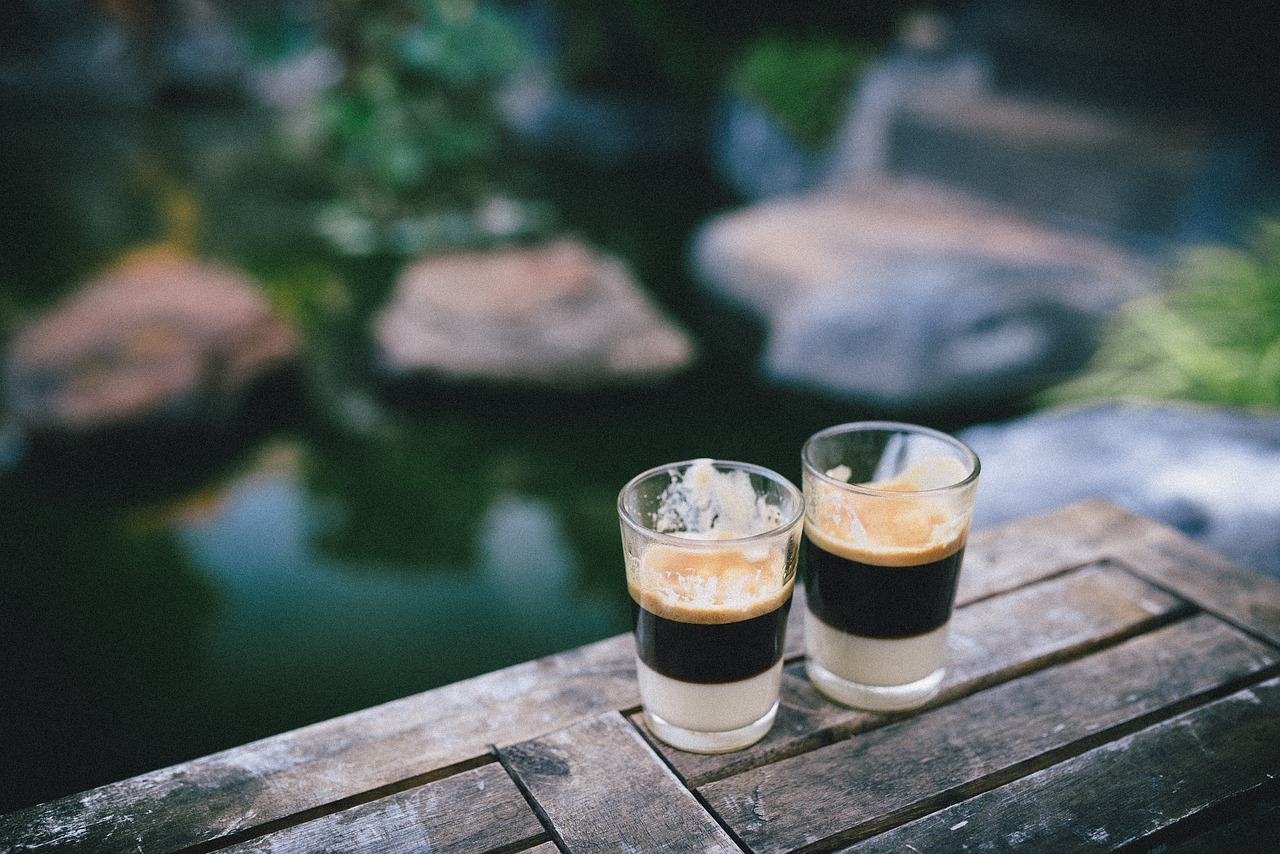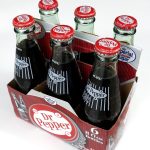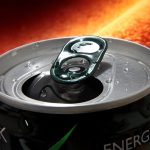In the bustling world of coffee enthusiasts and the ever-evolving landscape of coffee culture, understanding the intricacies of what goes into our favorite beverages is more than just a pastime—it’s a way to enhance our appreciation and make informed choices about our daily rituals. One of the most pivotal elements in this journey is caffeine, a compound that not only energizes our mornings but also influences our health and wellbeing. Within this realm, the double shot of espresso stands out as a cornerstone for countless coffee aficionados, offering a rich and intense experience that is both revered and meticulously analyzed.
This article delves deep into the heart of the espresso shot, unpacking the specifics of how much caffeine is nestled within this potent brew. Whether you’re a seasoned barista, a home coffee brewer, or simply someone who cherishes their daily caffeine fix, understanding the caffeine content in a double shot of espresso is crucial for tailoring your coffee consumption to your personal health and energy needs. Our exploration is not just about numbers; it’s an invitation to discover the science behind espresso, the factors that affect caffeine levels, and how this knowledge can empower you to savor your coffee to the fullest.
Join us as we navigate through expert insights, cutting-edge research, and practical advice, all aimed at equipping you with the knowledge to make the most of your espresso experiences. From the implications of caffeine on your health to the art of achieving the perfect balance in your coffee routine, this article promises to enrich your understanding and inspire a deeper appreciation for the beloved double shot of espresso. Let’s embark on this caffeinated journey together, sipping our way towards a more enlightened coffee culture.
Single vs Double: Defining Espresso Volumes

A double shot of espresso typically contains anywhere from 60 mg to 100 mg of caffeine, with some sources suggesting it can even reach up to 150 mg. The caffeine content in espresso can vary based on factors like the type of beans used and the volume of the espresso. Arabica beans have less caffeine compared to Robusta beans, which are commonly used in espresso in Italy, while Arabica beans are more prevalent in the United States, like at Starbucks[2]. In comparison, a single shot of espresso has about 40 mg of caffeine per ounce, while a brewed cup has around 10 mg per ounce, indicating that espresso has a higher caffeine concentration per ounce.
However, from Starbucks popularizing the double shot espresso worldwide to advances in commercial espresso machines, these standard definitions have become blurred. Nowadays, many specialty coffee shops rely on the mass of coffee used, not the volume extracted, to distinguish single and double shots. So how do you make sense of it all? Let’s break down the critical factors impacting caffeine levels.
Caffeine Content: The Complex Reality
Several key variables influence caffeine concentrations in espresso beyond just shot volume or mass of coffee. First is the natural caffeine levels in the coffee beans themselves. Arabica coffee species naturally have about half the caffeine of Robusta. The specific coffee variety and origin will also cause variation. Additionally, differences in roast styles change bean density and caffeine content. Lighter roasts tend to have slightly more caffeine than darker styles.
Another vital factor is the shot extraction time. Under-extracted shots with short extraction times will have noticeably less caffeine. Timing also interacts with grind size, tamping pressure, and water quality to impact extraction efficiency and caffeine levels. While complex, most double espresso shots will contain 60-100 mg of caffeine. Compared to drip coffee with 100-200 mg per 8 oz cup, espresso packs a concentrated punch!
Precision in Measurement: Weight vs Volume
The historical focus on shot volumes has given way to precise mass measurements by weight. Rather than a set volume, many cafes now prepare double shots based on a 2:1 brew ratio – 2 parts water to 1 part ground coffee. For example, 18 grams of ground coffee extracted with 36 grams (about 1 fl oz) of water.
This priority on mass over volume allows for more accuracy and consistency in extraction and caffeine content. But it can create confusion over what qualifies as a single or double when shot volumes and total liquid caffeine vary. Ultimately, both mass of grounds and extracted volume contribute to caffeine levels.
New Technologies, New Definitions
Another disruptive shift has been the introduction of alternative espresso brewing systems. Trendy new machines use centrifugation rather than high pressure to produce a concentrate called a “ristretto” shot with a higher coffee-to-water ratio than traditional espresso.
Despite the smaller fluid volume of just 15-30 mL, ristretto shots often contain more caffeine per ounce thanks to more concentrated bean extraction. This demonstrates how caffeine content cannot be judged by volume alone. Commercial pressures to speed up service may also lead some coffee shops to serve “double ristretto” shots that deviate from expected caffeine amounts.
Health Effects: Benefits vs Risks
Caffeine, when consumed in moderation, can provide real health perks like improved alertness, focus, and even athletic endurance. However, excessive intake can increase risks of hypertension, insomnia, anxiety, heart disease, and miscarriage according to research.
Most experts define moderate daily caffeine intake as 400 mg or less. This equates to about 4-5 double espresso shots. Pregnant women are advised to limit caffeine to less than 200 mg. Light caffeine consumers should take care not to overdo double shot intake and become dependent on caffeine’s stimulant effects.
Double Shot Realities: A Cross-Shop Experiment
To witness the real-world variability in double shot caffeine content first-hand, I visited coffee shops across my city, ordering “double shots” at each. What I found was striking inconsistency. Volumes ranged tremendously, from 0.75 oz up to a full 4 oz cup! Some tasted bold and strong while others were watery and weak.
Clearly, the definition of “double shot” is open to broad interpretation between cafes and baristas. Without asking detailed questions about brew methods and beans, caffeine amounts are almost impossible to predict. This demonstrates the importance of open communication between baristas and customers when ordering espresso.
Artisan Espresso: Constant Reinvention
At many trendy high-end coffee bars, you’ll find double shots being completely reimagined. Some independent cafes are using unique brewing ratios like 1:1 or 1:3 coffee to water to create “double ristretto” or “lungo” shots. Purists argue this distorts the true nature of espresso. But artisan coffee experimentation keeps pushing boundaries.
These progressive coffee shops are taking espresso back to its roots – letting the flavor and quality of ultra-fresh, single origin beans shine. They tailor extraction lengths, yields, and pressures specifically to each coffee on their seasonal rotation. For them, complex taste experience outweighs hitting a certain caffeine content. This constantly evolving definition of espresso highlights the creativity and passion of the specialty coffee scene.
Beyond Caffeine: The Bigger Picture
With all this emphasis on caffeine as a primary concern, it’s important not to overlook the many other facets that shape an espresso’s flavor and quality. The roast profile, coffee varietal, freshness, grind size, water chemistry, and extraction method all play crucial roles. Espresso preparation is a delicate art and science.
Moreover, the sustainable sourcing and ethical trade of coffee beans themselves deserve consideration alongside caffeine concentrations. Choosing locally roasted coffee from farms with fair labor practices can help support environmental preservation and economic development in coffee producing regions.
Ordering Tips for Coffee Lovers
For consumers, all this variability can make it tricky to get your perfect espresso with your desired hit of caffeine. Here are some tips for ordering double shots when visiting coffee shops:
- Ask the barista politely about their standard double shot size and caffeine content compared to a single.
- Specify if you have a preferred shot volume or brew ratio. Most baristas will gladly accommodate requests.
- If you enjoy strong, concentrated flavor, request a double ristretto shot.
- For a smoother, more caffeinated option, order a double lungo shot.
- Seek out coffee shops using scales and timers for obsessive precision in their espresso preparation.
- Choose shops focused on highlighting single origin beans rather than pushing volume.
Brewing Espresso at Home
The best way to fine tune your ideal double espresso shot with complete control over caffeine levels and flavor is to pull your own shots at home. You can play with variables like coffee amount, grind size, yield ratios, and brew times. Here are some DIY brewing tips:
- Invest in a quality burr grinder for uniform particle size and adjustable grind settings.
- Experiment with the mass of dry ground coffee – start at 14-18 grams for a double shot.
- Adjust your grind coarseness and shot yield to hit preferred strength and caffeine content.
- Aim for an approximately 30 second extraction time from first drip.
- Consider adding a PID temperature controller for precise temperature accuracy.
- Clean equipment regularly and use filtered water for the best tasting espresso.
Pulling consistent, nuanced espresso shots is an endless learning journey. Part of the ritual’s magic lies in the mastery of so many subtle variables. Use these tips tocaffeinate safely and sustainably.
Balance and Moderation
Like any food and drink choice, regularly consuming double espresso shots should be done in balance as part of an overall nutritious diet. Be mindful of your caffeine intake from all sources including coffee, tea, soda, energy drinks, chocolate, and supplements. Keep total daily consumption under 400mg, and ideally spread intake over several hours rather than spiking caffeine levels rapidly with multiple back-to-back double shots.
For health, mood stability, and sleep quality, rely more heavily on good nutrition, exercise, stress management, and restorative rest than the temporary stimulation of caffeine. But when enjoyed mindfully and in moderation, high-quality espresso’s blend of rich flavors and caffeine kick make it a true superfood.
Conclusion: The Craft of Espresso Endlessly Evolving
This deep dive into the caffeine content of double espresso shots highlights the incredible diversity in modern coffee preparation. As espresso spreads globally from historic Italian roots to modern specialty cafes, no two double shots are alike. From commercial automated machines pumping out hundreds of shots daily to the meticulous practices of award-winning baristas, making generalizations about espresso caffeine content proves impossible.
In many ways, this constant forging of new ground in pursuit of the perfect shot reflects the timeless passion and creativity that makes the world of coffee so fascinating. Espresso’s continuum of innovation pays homage to storied traditions while welcoming new ideas and technologies. For all its variations, espresso at its core remains a celebration of coffee beans in their purest and most concentrated form. The joy is in the journey, not the destination, when it comes to the craft of espresso.
Susan Muskat is a professional chef with over 25 years of experience in the culinary industry. After working in some of the most prestigious restaurants in the world, she opened her own restaurant, Moose and Sadie’s, which quickly became a local favorite. Susan is also the author of a blog all about recipes, guidelines, cooking tips, and knowledge from professional chefs. She loves nothing more than sharing her passion for food with others.








